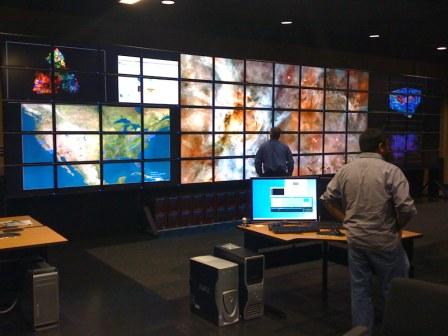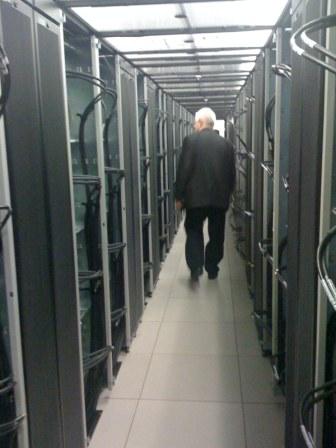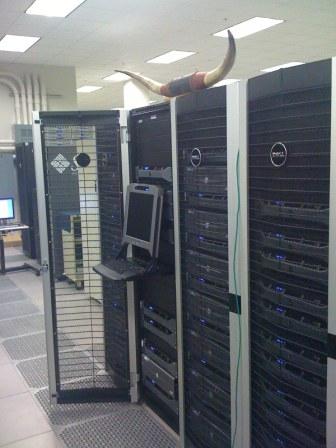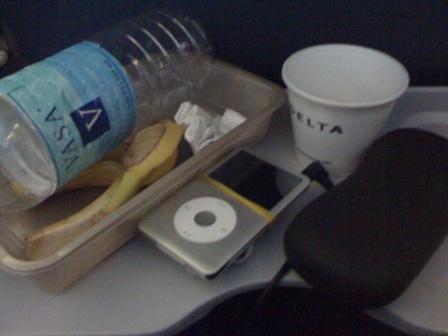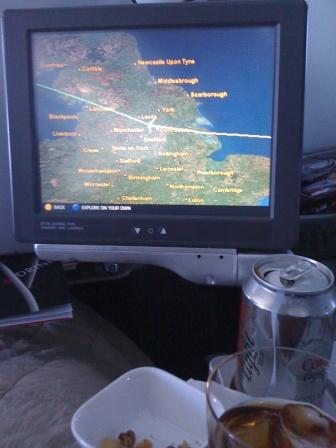
This has been a busy week as on Monday Western Digital (WD) announced that they were buying the disk drive business from Hitachi Ltd. (e.g. HGST) for about $4.3 billion USD. The deal includes about $3.5B in cash and 25 million WD common shares (e.g. $750M USD) which will give Hitachi Ltd. about ten (10) percent ownership in WD along with adding two Hitachi persons onto the WD board of directors. WD now moves into the number one hard disk drive (HDD) spot above Seagate (note Hitachi is not selling HDS) in addition to giving them a competitive positioning in both the enterprise HDD as well as emerging SSD markets.
Today NetApp announced that they have agreed to purchase portions of the LSI storage business known as Engenio for $480M USD.
The business and technology that LSI is selling to NetApp (aka Engenio) is the external storage system business that accounted for about $705M of their approximate $900M+ storage business in 2010. This piece of the business represents external (outside of the server) shared RAID storage systems that support Serial Attached SCSI (SAS), iSCSI, Fibre Channel (FC) and emerging FCoE (Fibre Channel over Ethernet) with SSD, SAS and FC high performance HDDs as well as high capacity HDDs. NetApp has block however there strong suit (sorry netapp guys) is file while Engenio strong suit is block that attaches to gateways from NetApp as well as others in addition to servers for scale out NAS and cloud.
What NetApp is getting from LSI is the business that sells storage systems or their components to OEMs including Dell, IBM (here and here), Oracle, SGI and TeraData (a former NCR spin off) among others.
What LSI is retaining are their custom storage silicon, ICs, PCI RAID adapter and host bus adapter (HBA) cards including MegaRAID, 3ware along with SAS chips, SAS switches, PCI SSD card and the Onstor NAS product they acquired about a year ago. Other parts of the LSI business which makes chips for storage, networking and communications vendors is also not affected by this deal.
In other words, the sign in front of the Wichita LSI facility that used to say NCR will now probably include a NetApp logo once the deal closes.
For those not familiar, Tom Georgens current CEO of NetApp is very familiar with Engenio and LSI as he used to work there (after leaving a career at EMC). In fact Mr. Georgens was part of the most recent attempt to spin the external storage business out of LSI back in the mid 2000s when it received the Engenio name and branding. In addition to Tom Georgens, Vic Mahadevan the current NetApp Chief Strategy Officer recently worked at LSI and before that at BMC, Compaq and Maxxan among others.
What do I mean by the most recent attempt to spin the storage business out of LSI? Simple, the Engenio storage business traces its lineage back to NCR and what become known as Symbiosis Logic that LSI acquired as part of some other acquisitions.
Going back to the late 90s, there was word on the street that the then LSI management was not sure what to do with storage business as their core business was and still is making high volume chips and related technologies. Current LSI CEO Abhi Talwalkar is a chip guy (nothing wrong with that) who honed his skills at Intel. Thus it should not be a surprise that there is a focus on the LSI core business model of making their own as well as producing silicon (not the implant stuff) for IT and consumer electronics (read their annual report).
As part of the acquisition, LSI has already indicated that they will use all or some of the cash to buy back their stock. However I also wonder if this does not open the door for Abhi and his team to do some other acquisitions more synergic with their core business.
What does NetApp get:
- Expanded OEM and channel distribution capabilities
- Block based products to coexist with their NAS gateways
- Business with an established revenue base
- Footprint into new or different markets
- Opportunity to sell different product set to existing customers
NetApp gets an OEM channel distribution model to complement what they already have (mainly IBM) in addition to their mainly direct sales and with VARs. Note that Engenio went to an all OEM/distribution model several years ago maintaining direct touch support for their partners.
Note that NetApp is providing financial guidance that the deal could add $750M to FY12 which is based on retaining some portion of the existing OEM business however moving into new markets as well as increasing product diversity with existing direct customers, vars or channel partners.
NetApp also gets to address storage market fragmentation and enable OEM as well as channel diversification including selling to other server vendors besides IBM. The Engenio model in addition to supporting Dell, IBM, Oracle, SGI and other server vendors also involves working with vertical solution integrator OEMs in the video, entertainment, High Performance Compute (HPC), cloud and MSP markets. This means that NetApp can enter new markets where bandwidth performance is needed including scale out NAS (beyond what NetApp has been doing). This also means that NetApp gets a product to sell into markets where back end storage for big data, bulk storage, media and entertainment, cloud and MSP as well as other applications leverage SAS, iSCSI or FC and FCoE beyond what their current lineup offers. Who sells into those spaces? Dell, HP, IBM, Oracle, SGI and Supermicro among others.
What does LSI get:
- $480M USD cash and buy back some stock to keep investors happy
- Streamline their business or open door for new ones
- Perhaps increase OEM sales to other new or existing customers
- Perhaps do some acquisitions or be acquired
What does Engenio get:
A new parent that hopefully invest in the technology and marketing of the solution sets as well as leverage or take care of the installed base of customers
What do the combined Engenio and NetApp OEMs and partners get:
With combination of the organizations, hopefully streamlined support, service, and marketing, product enhancements to address new or different needs. Possibly comfort in knowing that Engenio now has a home and its future somewhat known.
What about the Engenio employees?
The reason I bring this up is wondering what happens to those who have many years invested and their LSI stock which I presume they keep hoping that the sale gives them a future return on their investment or efforts. Having been in similar acquisitions in the past, it can be a rough go however if the acquirer has a bright future, than enough said.
Some random thoughts:
Is this one of those industry trendy, sexy, cool everybody drooling type deals with new and upcoming technology and marketing buzz?
No
Is this one of those industry deals that has good upside potential if executed upon and leveraged?
Yes
Netapp already has a storage offering why do they need Engenio?
No offense to NetApp, however they have needed a robust block storage offering to complement their NAS file serving and extensive software functionality to move into to different markets. This is not all that different from what EMC needed to do in the late 90s extending their capabilities from their sole cash cow platform Symmetrix to acquire DG to have a mid range offering.
NetApp is risking $480M on a business with technologies that some see or say is on the decline, so why would they do such a thing?
Ok, lets set the technology topics aside, from a pure numbers perspective, lets take two scenarios and Im not a financial person so go easy on me please. What some financial people have told me with other deals is that its sometimes about getting a return on cash vs. it not doing anything. So with that and other things in mind, say NetApp just lets $480M sit in the bank, can they get 12 per cent or better interest? Probably not and if they can, I want the name of that bank. What that means is that for a five year period, if they could get that rate of return (12 percent), they would only make $824M-480M=$344M on the investment (I know, there are tax and other financial considerations however lets keep simple). Now lets take another scenario, assume that NetApp simply rides a decline of the business at say a 20 percent per year rate (how many business are growing or in storage declining at 20 percent per year?) for five years. That works out to about a $1.4B yield. Lets take a different scenario and assume that NetApp can simply maintain an annual run rate of $700-750M for that five years, that works out to around $3.66B-480M=$3.1B revenue or return on investment. In other words, even with some decline, over a five year period, the OEM business pays for the deal alone and perhaps helps funds investment in technology improvement with the business balance being positive upside.
Now both of those are extreme scenarios so lets take something more likely such as NetApp being able to simply maintain a 700-750M run rate by keeping some of the OEM business, finding new markets for challenge and OEM as well as direct, expanding footprint into their markets. Now that math gets even more interesting. Having said all of that, NetApp needs to keep investing in the business and products to get those returns which might help explain the relative low price to run rate.
Is this a good deal for NetApp?
IMHO yes, as long as NetApp does not screw it up. If NetApp can manage the business, invest in it, grow into new markets instead of simple cannibalization, they will have made a good deal similar to what EMC did with DG back in the late 90s. However NetApp needs to execute, leverage what they are buying, invest in it and pick up new business to make up for the declining business with some of the OEMs.
With several hundred thousand systems or controllers having been sold over the years (granted how many are actually running is your guess as good as mine), NetApp has a footprint to leverage with their other products. For example, should IBM, Dell or Oracle completely walk away from those installed footprints, NetApp can move in with firmware or other upgrades to support plus up sell with their NAS gateways to add value with compression, dedupe, etc.
What about NetApps acquisition track record?
Fair question although Im sure the NetApp faithful wont like it. NetApp has had their ups and downs with acquisitions (Topio, Decru, Spinaker, Onaro, etc), perhaps with this one like EMC in the late 90s who bought DG to overcome some rough up and down acquisitions can also get their mojo on. (See this post).While we are on the topic of acquisitions, NetApp recently bought Akorri and last year Bycast which they now call StorageGrid that has been OEMd in the past by IBM. Guess what storage was commonly used under the IBM servers running the Bycast software? If you guessed XIV you might want to take a mulligan or a do over. Btw, HP also has OEMd the Bycast software. If you are not familiar with Bycast and interested in automated movement, tiering, policy management, objects and other buzzwords, ping your favorite NetApp person as it is a diamond in the rough if leveraged beyond healthcare capabilities.
What does this mean for Xyratex and Dothill who are NetApp partners?
My guess is that for now, the general purpose enclosures would stay the same (e.g. Xyratex) until there is a business case to do something different. For the high density enclosures, that could be a different scenario. As for others, we will have to wait and see.
Will NetApp port OnTap into Engenio?
The easiest and fastest thing is to do what NetApp and Engenio OEM customers have already been doing, that is, place the Engenio arrays behind the NetApp fas vfiler. Note that Engenio has storage systems that speak SAS to HDDs and SSDs as well as able to speak SAS, iSCSI and FC to hosts or gateways. NetApp has also embraced SAS for back end storage, maybe we will see them leverage a SAS connection out of their filers in the future to SAS storage systems or shelves instead of FC loop?
Speaking of SAS host or server attached storage, guess what many cloud, MSP, high performance and other environment are using for storage on the back end of their clusters or scale out NAS systems?
Yup, SAS.
Guess what gap NetApp gets to fill joining Dell, HP, IBM and Oracle who can now give a choice of SAS, iSCSI or FC in addition or NAS?
Yup, SAS.
Care to guess what storage vendor we can expect to hear downplay SAS as a storage system to server or gateway technology?
Hmm
Is this all about SAS?
No
Will this move scare EMC?
No, EMC does not get scared, or at least that is what they tell me.
Will LSI buy Fusion IO who has or is filing their documents to IPO or someone else?
Your guess or speculation is better than mine. However LSI already has and is retaining their own PCIe SSD card.
Why only $480M for a business that did $705M in 2010?
Good question. There is risk in that if NetApp does not invest in the product, marketing, relationships that they will not see the previous annual run rate so it is not a straight annuity. Consequently NetApp is taking risk with the business and thus they should get the reward if they can run with it. Another reason is that there probably were not any investment bankers or brokers running up the price.
Why didnt Dell buy Engenio for $480M?
Good question, if they had the chance, they should have however it probably would not have been a good fit as Dell needs direct sales vs. OEM sales.
Ok, nuff said (for now)
Cheers gs
Greg Schulz – Author Cloud and Virtual Data Storage Networking (CRC Press), The Green and Virtual Data Center (CRC Press) and Resilient Storage Networks (Elsevier)
twitter @storageio
All Comments, (C) and (TM) belong to their owners/posters, Other content (C) Copyright 2006-2024 Server StorageIO and UnlimitedIO LLC All Rights Reserved


















